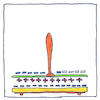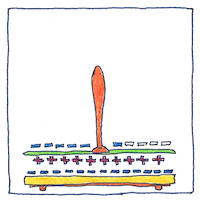Johan Carl Wilcke
tribology

|
Triboelectric series
A material, when pressed or rubbed against another, either picks up a negative static electric charge or loses its own with varying strength. Therefore, you can assemble a series of materials so that the next one gains from the one before it, and gradually accumulate more and more electric charge.
Electrophorus
Johan Carl Wilcke invented it. Alessandro Volta improved it and named it “electricity bearer.” Rub a plate of wax with fur to give it a negative charge. Rest a metal plate on the wax to separate its charges. Touch the top of the metal plate to drain off its negative charge. Lift the metal plate with its insulated handle and use its remaining positive charge. Georg Christoph Lichtenberg made a big one, and used it to create branching discharge patterns.
Static
Benjamin Franklin and Henry Cavendish did just fine with only static electricity to experiment with. We receive radio static driving miles and miles from the stations’ broadcast towers. The energy of a group that does what it does because it has always done it will eventually drain completely away. Touch ground before handling electronic parts. A stray spark can fry their delicate components. If lovers describe their attraction as “electricity,” are their charges static and opposite?



The title of Johan Carl Wilcke’s thesis in 1757 is Disputatio physica experimentalis, de electricitatibus contrariis. For his triboelectric series, he listed smooth glass (producing the most positive charge), wool, quills, wood, paper, sealing wax, white wax, rough glass, lead, sulfur, and metals other than lead (producing the most negative charge).
See also in The book of science:
Readings in wikipedia: